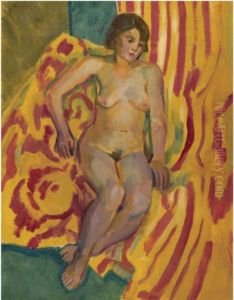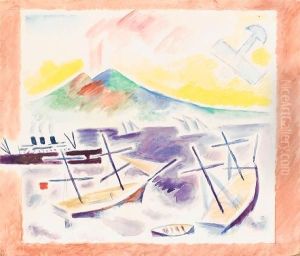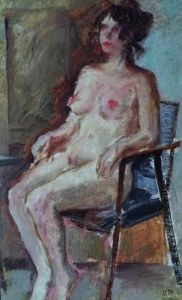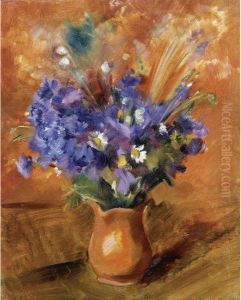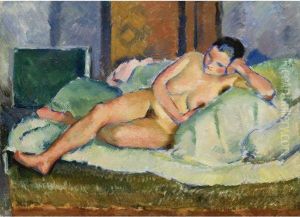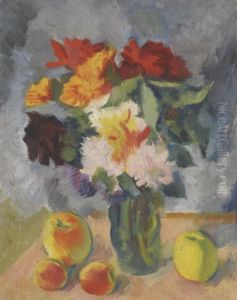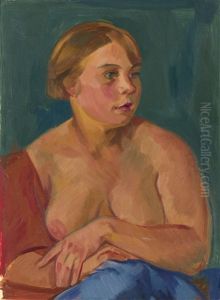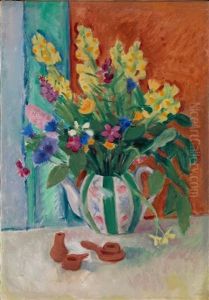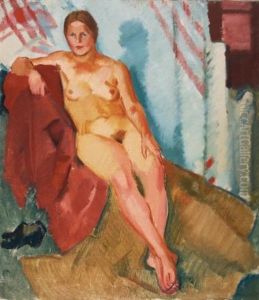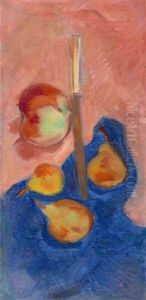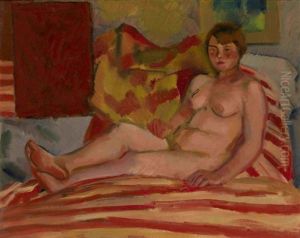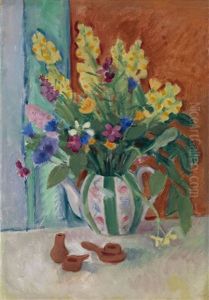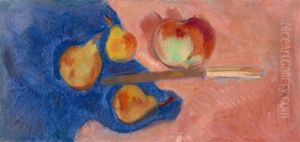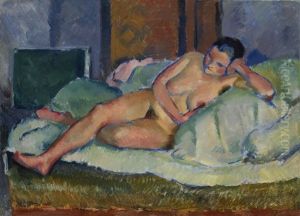Nikolai Andreevich Tyrsa Paintings
Nikolai Andreevich Tyrsa was a notable Russian artist, born on November 10, 1887, in the town of Nizhny Novgorod, Russian Empire. Growing up during a period of significant social and artistic change, Tyrsa was part of the early 20th-century avant-garde movement that sought to redefine the boundaries of art in Russia and beyond.
Tyrsa began his artistic education at the Nizhny Novgorod School of Painting and Drawing. He later moved to Saint Petersburg, where he continued his studies at the Higher Art School at the Imperial Academy of Arts from 1907 to 1913. During his time in Saint Petersburg, he was exposed to the burgeoning Russian avant-garde scene, engaging with various artistic circles and participating in exhibitions that showcased his development as an artist.
After completing his studies, Tyrsa traveled abroad, which was common for Russian artists of the time seeking to broaden their horizons. He spent time in Italy, where he was particularly influenced by the Renaissance masters, and in Paris, then the epicenter of the modern art world. His experiences in Europe helped to shape his artistic vision, integrating elements of European modernism with Russian artistic traditions.
Upon returning to Russia, Tyrsa became actively involved in the post-revolutionary cultural environment. He worked in various capacities: as a painter, graphic artist, and teacher. His work from this period reflects a search for a new artistic language that could resonate with the ideological and aesthetic shifts of the time. He experimented with different styles and techniques, contributing to the diversity of the avant-garde movement.
During the 1920s and 1930s, Tyrsa's career as an educator became more pronounced. He taught at the Vkhutemas-Vkhutein (Higher Art and Technical Studios-Higher Art and Technical Institute), a state art and technical school founded after the revolution, which was a hub for avant-garde art and architecture. His role as a teacher allowed him to influence a younger generation of artists and to participate in the debates about the role of art and artists in the new Soviet society.
However, the political climate in the Soviet Union during the 1930s grew increasingly repressive under Stalin's regime. The avant-garde was gradually suppressed, and artists were expected to conform to the socialist realist style, which was established as the official art form. This shift had a profound impact on Tyrsa's career and creative expression.
Tragically, Nikolai Andreevich Tyrsa's life came to a premature end during the Second World War. He died on February 10, 1942, in the city of Leningrad (now Saint Petersburg), which was under siege by German forces at the time. Despite the hardships he faced, Tyrsa's artistic legacy remains, reflecting the dynamism and complexity of the Russian avant-garde. His works are preserved in various museums and collections, serving as a testament to his contributions to the art world.
